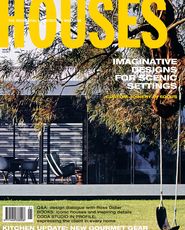
Build-on: Converted Architecture And Transformed Buildings by Edited By Robert Klanten and Lukas Feireiss
Urban dwellers in Australia’s eastern states can be weary of the build-on concept. In the 1950s, the ubiquitous backyard lean-to characterized Robin Boyd’s concept of “Australian ugliness.” In the 1990s, every proud owner of a Victorian terrace or worker’s cottage seemed to display their wealth conspicuously by inserting a large white-painted box at the rear of their house. Each new insert was completed with a new kitchen – a mute confection of stainless steel European appliances and white, glossy MDF joinery. In Build-On we’re shown the other side of converted heritage architecture – transformations that create a dialogue among the past, present and future.
Edited by Robert Klanten and Lukas Feireiss (Gestalten, 2009) 240pp, RRP $145.00.















